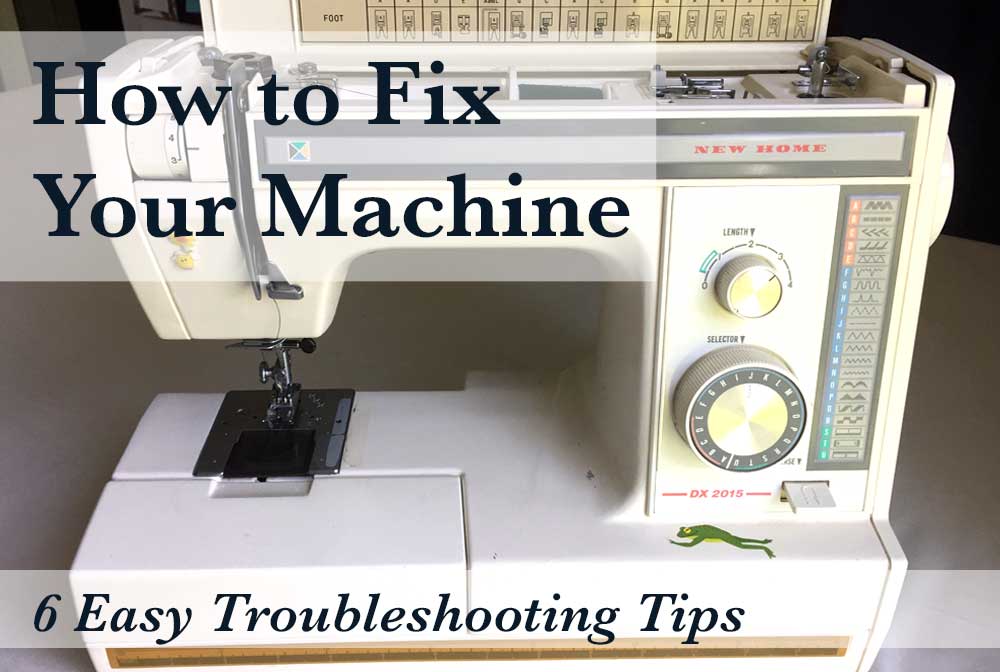
Sometimes it seems sewing machines can start acting up out of the blue. It’s sewing fine, and then it isn’t. Ug!
There is a magic trick to fixing 90% of your sewing machine troubles, and it’s easy.
The video demonstrates, in detail, 6 things to check and correct when you’re having skipped stitches, threads breaking, wobbly stitches (that are supposed to be straight), tangles of threads under the feed dogs and other common, but annoying machine mishaps.
Always do the first troubleshooting tip first because it almost always fixes your problem. And always test that the fix you just did worked (or didn’t) by sewing on a scrap of fabric before moving on to another fix.
The 6 Easy Troubleshooting Tips
Watch the video for the full explanations but here’s the cheat sheet:
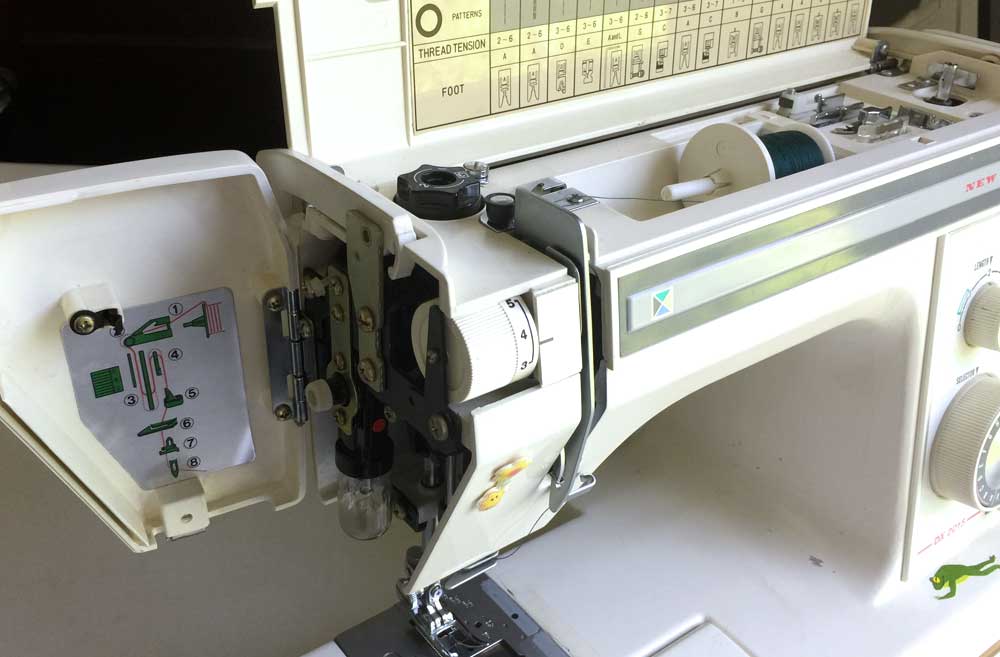
1. Rethread Your Machine & Bobbin
Yes, it’s true. Rethreading your sewing machine will solve most of the problems with your machine.
Take the spool off completely, and then rethread the machine. Pay attention to the direction your spool should unwind according to your sewing machine manual. And pay special attention that the thread does indeed slip in between the tension disks.
Take the bobbin out of the machine and rethread it as well.
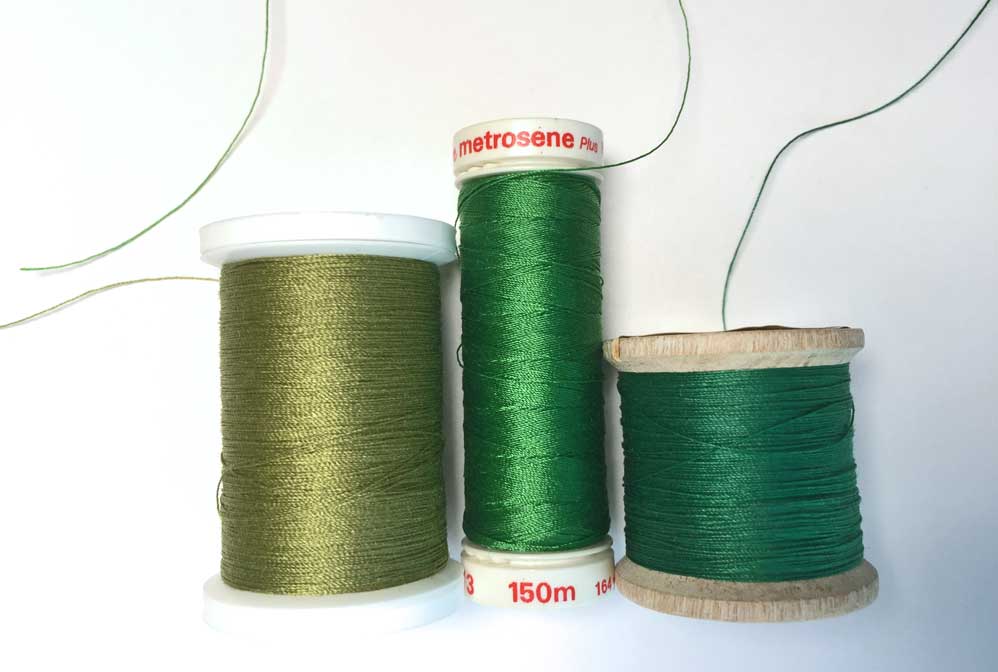
Not an Official Tip but do check your thread.
Quality of thread and age of thread can make a huge difference in your stitches. Any thread on a wooden spool is too old to sew with.
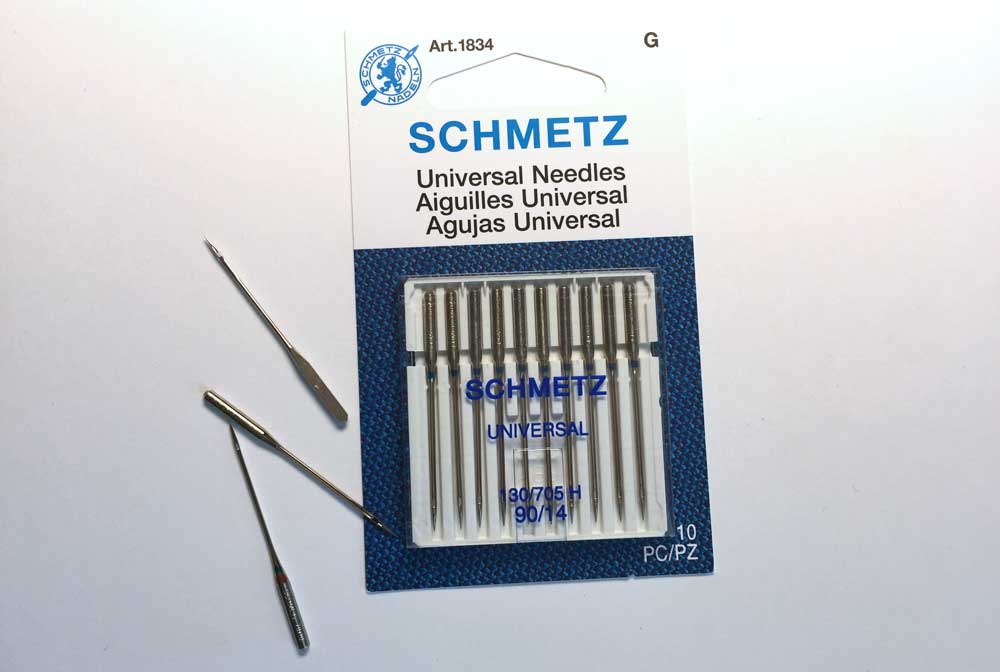
2. Change Your Needle
How long have you sewn with that needle? Is it bent? nicked?
Is it the right size and type for your fabric?
Old needles can dull, and a dull, damaged or wrong needle can cause stitch problems.
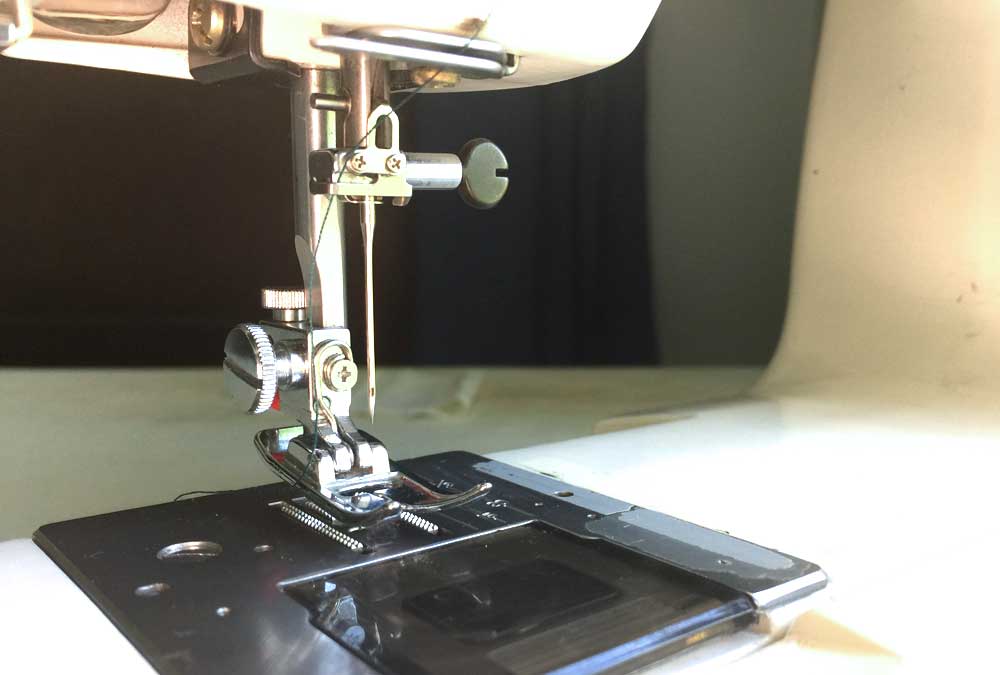
3. Reinsert Your Needle
Even if your needle is new, take it out and reinsert it. Pay attention to the flat and curved sides of the head of the needle and be sure they are positioned correctly according to your machine manual. Also, be certain the needle is fully inserted into the correct cavity.
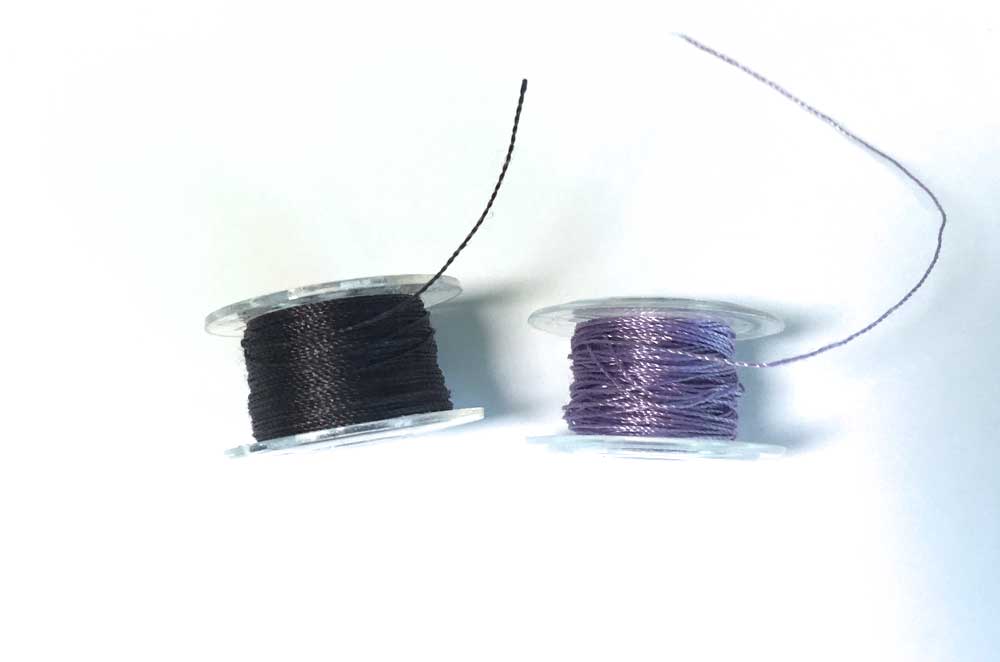
4. Check Your Bobbin
Bobbins should be wound evenly (on the left) not looking like a crazy mess (on the right). The bobbin itself should be smooth, free of nicks or burrs which thread can catch on causing skipped stitches and/or broken threads.
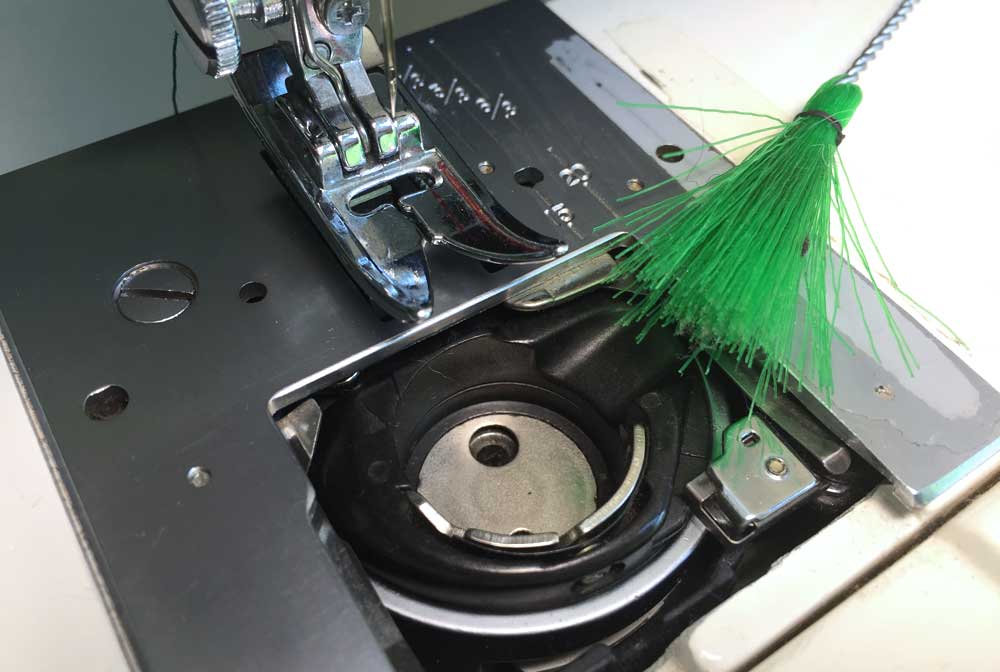
5. Clean Your Machine
Get the lint out of the bobbin area. Occasionally remove the throat plate and remove the lint under it. Little threads can also be in the tension disks. To remove them slide a clean piece of muslin or similar fabric, between the disks.
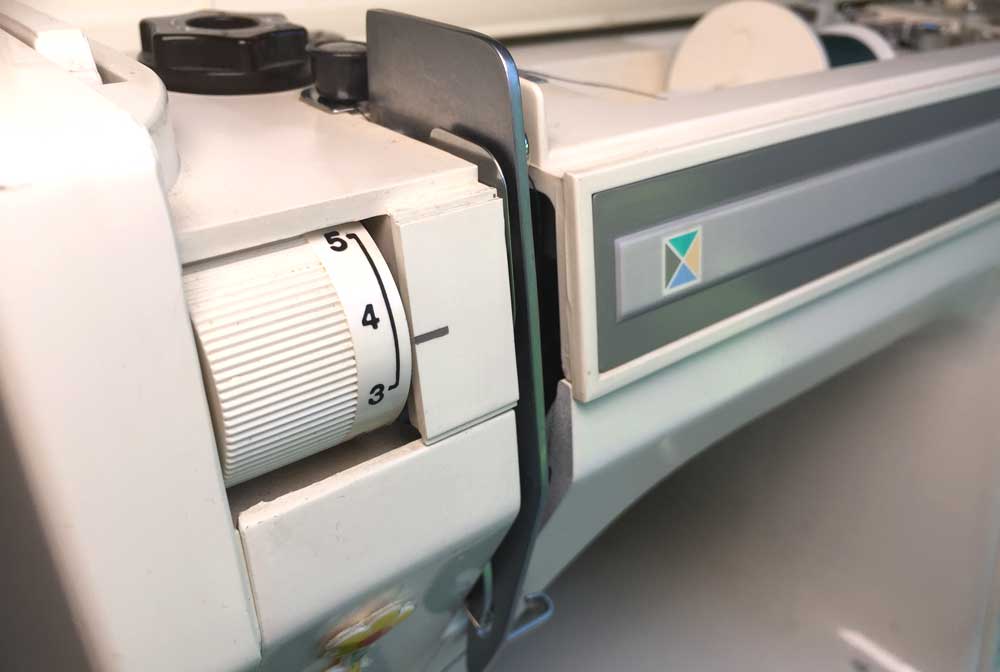
6. Adjust Your Thread Tension
The last tip is to adjust your upper thread tension. Most machines have an automatic tension adjuster for the upper thread but on occasion, you may need to manually fine tune it.
And That Should Fix It But If It Didn’t…
If your machine is still not sewing as it should maybe it’s time to take it to a reputable repair shop for its annual check-up. If you sew a lot your machine should go in every year for oiling and cleaning and a general tune-up. If your machine has been stored away in an attic or unit that was not climate controlled you may need to take it in as the machine grease can become thick and gummy in those situations.

